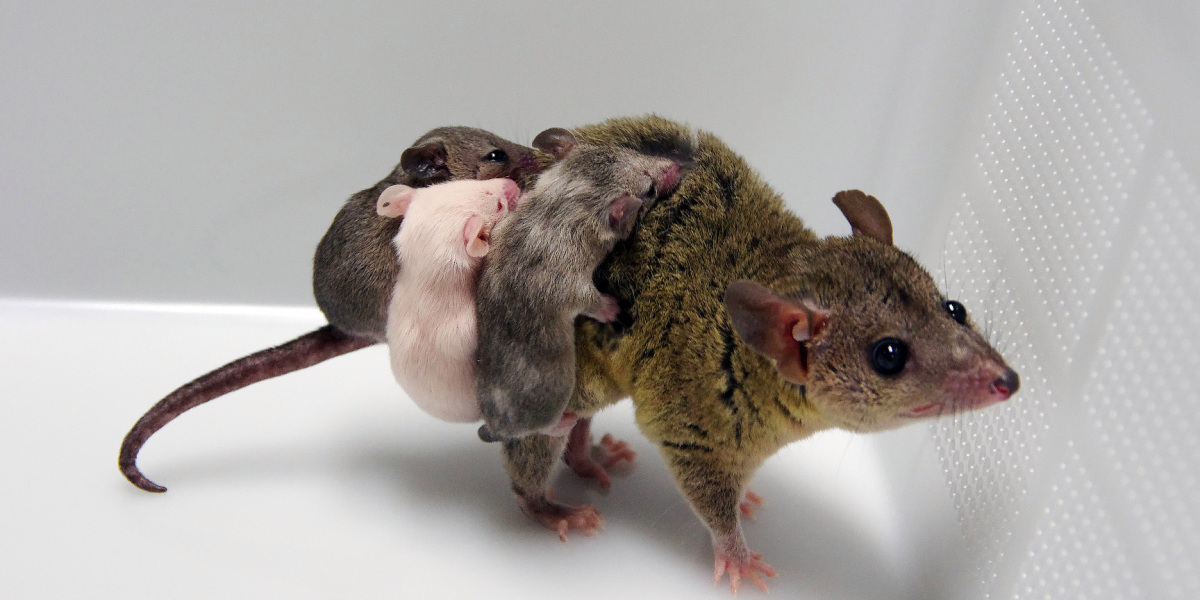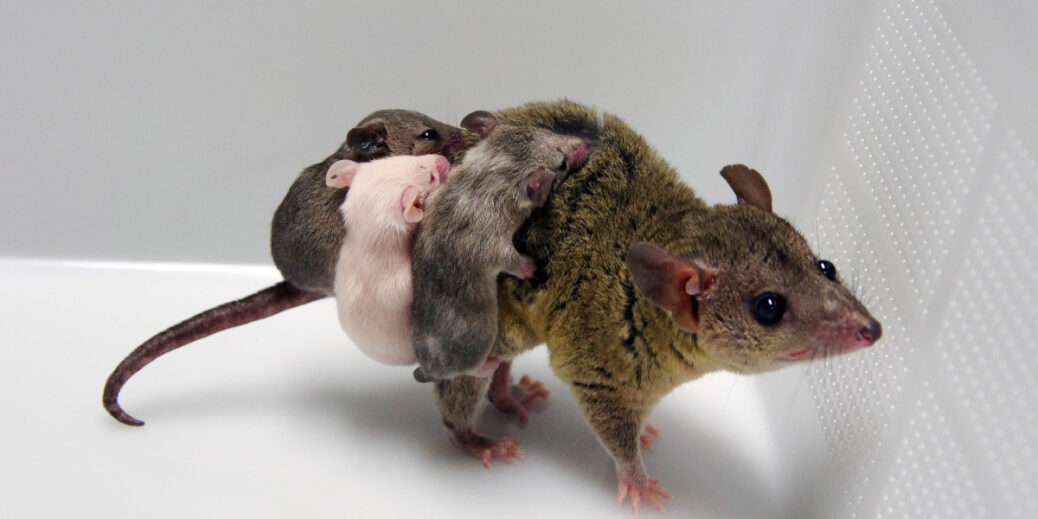
While kangaroos and koalas are more well-known, researchers who study marsupials often use opossums in lab experiments, since they’re smaller and easier to care for. Gray short-tailed opossums, the species used in the study, are related to the white-faced North American opossums, but they’re smaller and don’t have a pouch.
The researchers at Riken used CRISPR to delete, or knock out, a gene that codes for pigment production. Targeting this gene meant that if the experiments worked, the results would be obvious at a glance: the opossums would be albino if both copies of the gene were knocked out, and mottled, or mosaic, if a single copy was deleted.
The resulting litter included one albino opossum and one mosaic opossum (pictured above). The researchers also bred the two, which resulted in a litter of fully albino opossums, showing that the coloring was an inherited genetic trait.
The researchers had to navigate a few hurdles to edit the opossum genome. First, they had to work out the timing of hormone injections to get the animals ready for pregnancy. The other challenge was that marsupial eggs develop a thick layer around them, called a mucoid shell, soon after fertilization. This makes it harder to inject the CRISPR treatment into the cells. In their first attempts, needles either would not penetrate the cells or would damage them so the embryos couldn’t survive, Kiyonari says.
The researchers realized that it would be a lot easier to do the injection at an earlier stage, before the coating around the egg got too tough. By changing when the lights turned off in the labs, researchers got the opossums to mate later in the evening so that the eggs would be ready to work with in the morning, about a day and a half later.
The researchers then used a tool called a piezoelectric drill, which uses electric charge to more easily penetrate the membrane. This helped them inject the cells without damaging them.
“I think it’s an incredible result,” says Richard Behringer, a geneticist at the University of Texas. “They’ve shown it can be done. Now it’s time to do the biology,” he adds.
Opossums have been used as laboratory animals since the 1970s, and researchers have attempted to edit their genes for at least 25 years, says VandeBerg, who started trying to create the first laboratory opossum colony in 1978. They were also the first marsupial to have their genome fully sequenced, in 2007.
Comparative biologists hope the ability to genetically modify opossums will help them learn more about some of the unique aspects of marsupial biology that have yet to be decoded. “We find genes and marsupial genomes that we don’t have, so that creates a bit of a mystery as to what they’re doing,” says Rob Miller, an immunologist at the University of New Mexico, who uses opossums in his research.







Recent Comments